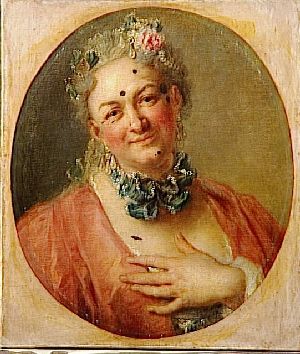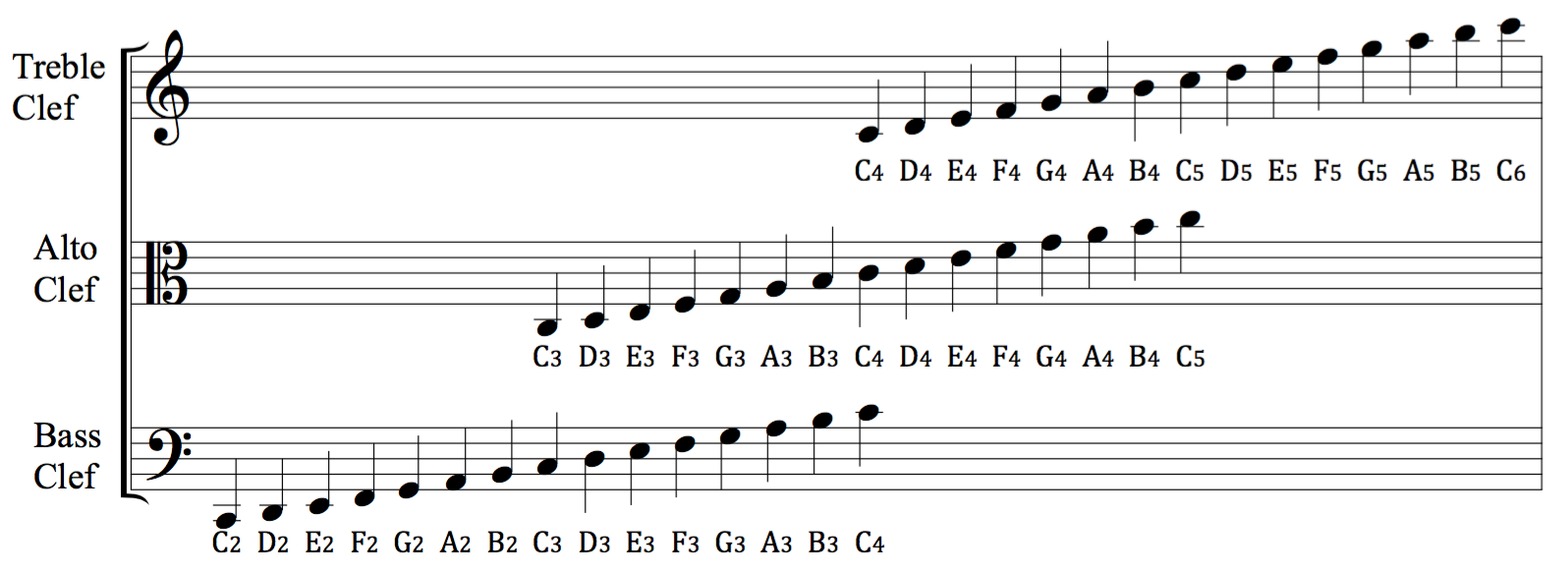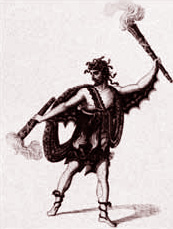|
Ĺ’dipe Ă Colone
() is an operatic tragédie lyrique by Antonio Sacchini first performed at Versailles on 4 January 1786 in the presence of King Louis XVI and Marie Antoinette. The libretto, by Nicolas-François Guillard, is based on the play ''Oedipus at Colonus'' by Sophocles. The premiere, intended to inaugurate the new theatre at Versailles, was not a success, possibly due to the quality of the performances, the staging, or the acoustics. Marie Antoinette promised Sacchini a better production at Fontainebleau in the autumn, but the Affair of the Diamond Necklace meant she was unable to have her wish. The news that the production was cancelled is said to have hastened the death of the already seriously ill composer on October 9, 1786. ''Œdipe'' was given a posthumous performance by the Paris Opera at the Théâtre de la Porte Saint-Martin on February 1, 1787. This time the audience was warmly appreciative and the opera became one of the most popular pieces in the repertoire for several decade ... [...More Info...] [...Related Items...] OR: [Wikipedia] [Google] [Baidu] |
Tragédie En Musique
''Tragédie en musique'' (, musical tragedy), also known as ''tragédie lyrique'' (, lyric tragedy), is a genre of French opera introduced by Jean-Baptiste Lully and used by his followers until the second half of the eighteenth century. Operas in this genre are usually based on stories from classical mythology or the Italian romantic epics of Tasso and Ariosto. The stories may not necessarily have a tragic ending – in fact, most do not – but the works' atmospheres are suffused throughout with an affect of nobility and stateliness. The standard ''tragédie en musique'' has five acts. Early works in the genre were preceded by an allegorical prologue and, during the lifetime of Louis XIV, these generally celebrated the king's noble qualities and his prowess in war. Each of the five acts usually follows a basic pattern, opening with an aria in which one of the main characters expresses their feelings, followed by dialogue in recitative interspersed with short arias (''petits a ... [...More Info...] [...Related Items...] OR: [Wikipedia] [Google] [Baidu] |
Antigone
ANTIGONE (Algorithms for coNTinuous / Integer Global Optimization of Nonlinear Equations), is a deterministic global optimization solver for general Mixed-Integer Nonlinear Programs (MINLP). History ANTIGONE is an evolution of GloMIQO, a global Mixed-Integer Quadratic Programming solver written by Ruth Misener. ANTIGONE extends the functionality of GloMIQO to general MINLP problems. Features Like all deterministic global optimization software, ANTIGONE is a toolbox of many techniques in order to tackle different special cases of nonlinear structure. That being said, it is predominantly a branch-and-bound solver. Its main algorithmic procedure is split into 4 main steps: # Reformulation of user input # Detection of special structure # Selection of best algorithm for the detected structure # Solution of the problem using the selected algorithm With the exception of special cases of optimization problems (for instance convex NLPs) which can be solved at the root node of the bra ... [...More Info...] [...Related Items...] OR: [Wikipedia] [Google] [Baidu] |
Contralto
A contralto () is a classical music, classical female singing human voice, voice whose vocal range is the lowest of their voice type, voice types. The contralto's vocal range is fairly rare, similar to the mezzo-soprano, and almost identical to that of a countertenor, typically between the F below middle C (F3 in scientific pitch notation) to the second F above middle C (F5), although, at the extremes, some voices can reach the D below middle C (D3) or the second B above middle C (B5). The contralto voice type is generally divided into the coloratura, lyric, and dramatic contralto. History "Contralto" is primarily meaningful only in reference to classical and operatic singing, as other traditions lack a comparable Voice classification in non-classical music, system of vocal categorization. The term "contralto" is only applied to female singers; men singing in a similar range are called "countertenors". The Italian terms "contralto" and "alto" are not synonymous, "alto" technic ... [...More Info...] [...Related Items...] OR: [Wikipedia] [Google] [Baidu] |
Haute-contre
The ''haute-contre'' (plural ''hautes-contre'') was the primary French operatic tenor voice, predominant in French Baroque and Classical opera, from the middle of the seventeenth century until the latter part of the eighteenth century. History This voice was predominantly used in male solo roles, typically heroic and amatory ones, but also in comic parts, even '' en travesti'' (see apropos the portrait reproduced below and representing Pierre Jélyotte made up for the female title role of Rameau's ''Platée ''Platée'' is an opera in a prologue and three acts by Jean-Philippe Rameau with a libretto by Adrien-Joseph Le Valois d'Orville. Rameau bought the rights to the libretto ''Platée ou Junon jalouse'' (''Plataea, or Juno Jealous'') by Jacques Autr ...''). Lully wrote 8 out of 14 leading male roles for the voice; Charpentier, who was an haute-contre himself, composed extensively for the voice-part, as did Rameau and, later, Gluck. The leading ''hautes-contre'' of the A ... [...More Info...] [...Related Items...] OR: [Wikipedia] [Google] [Baidu] |
Oedipus
Oedipus (, ; "swollen foot") was a mythical Greek king of Thebes. A tragic hero in Greek mythology, Oedipus fulfilled a prophecy that he would end up killing his father and marrying his mother, thereby bringing disaster to his city and family. The story of Oedipus is the subject of Sophocles' tragedy ''Oedipus Rex'', which is followed in the narrative sequence by '' Oedipus at Colonus'' and then '' Antigone''. Together, these plays make up Sophocles' three Theban plays. Oedipus represents two enduring themes of Greek myth and drama: the flawed nature of humanity and an individual's role in the course of destiny in a harsh universe. In the best-known version of the myth, Oedipus was born to King Laius and Queen Jocasta of Thebes. Laius wished to thwart the prophecy, so he sent a shepherd-servant to leave Oedipus to die on a mountainside. However, the shepherd took pity on the baby and passed him to another shepherd who gave Oedipus to King Polybus and Queen Merope to raise ... [...More Info...] [...Related Items...] OR: [Wikipedia] [Google] [Baidu] |
Juan Oncina
Juan Oncina (April 15, 1921 in Barcelona – December 29, 2009 in Barcelona) was a Spanish tenor, particularly associated with Rossini and light Donizetti roles, one of the leading tenore di grazia of the 1950s. Life and career Juan Oncina began his vocal studies in Barcelona with Mercedes Capsir, and later in Milan, with Augusta Oltrabella. He made his debut in Barcelona, as des Grieux in ''Manon'', in 1946. The same year he made his Italian debut in Bologna, as Almaviva in ''Il barbiere di Siviglia''. He appeared in 1949, as Paolino in ''Il matrimonio segreto'', in Paris, and in Cherubini's ''L'osteria portoghese'' and Lully's '' Armide'', in Florence. The turning point in his career came in 1952, when he made his debut at the Glyndebourne Festival, where he was to appear until 1961, especially in Rossini roles such as Almaviva, Lindoro in ''L'italiana in Algeri'', Ramiro in ''La Cenerentola'', and most notably as '' Le comte Ory'', possibly his greatest success. Apart ... [...More Info...] [...Related Items...] OR: [Wikipedia] [Google] [Baidu] |
Clef
A clef (from French: 'key') is a musical symbol used to indicate which notes are represented by the lines and spaces on a musical staff. Placing a clef on a staff assigns a particular pitch to one of the five lines or four spaces, which defines the pitches on the remaining lines and spaces. The three clef symbols used in modern music notation are the G-clef, F-clef, and C-clef. Placing these clefs on a line fixes a reference note to that line—an F-clef fixes the F below middle C, a C-clef fixes middle C, and a G-clef fixes the G above middle C. In modern music notation, the G-clef is most frequently seen as treble clef (placing G4 on the second line of the staff), and the F-clef as bass clef (placing F3 on the fourth line). The C-clef is mostly encountered as alto clef (placing middle C on the third line) or tenor clef (middle C on the fourth line). A clef may be placed on a space instead of a line, but this is rare. The use of different clefs makes it possible t ... [...More Info...] [...Related Items...] OR: [Wikipedia] [Google] [Baidu] |
Bass-baritone
A bass-baritone is a high-lying bass or low-lying "classical" baritone voice type which shares certain qualities with the true baritone voice. The term arose in the late 19th century to describe the particular type of voice required to sing three Wagnerian roles: the title role in '' Der fliegende Holländer'', Wotan/Der Wanderer in the '' Ring Cycle'' and Hans Sachs in '' Die Meistersinger von NĂĽrnberg''. Wagner labelled these roles as ''Hoher Bass'' ("high bass")—see fach for more details. The bass-baritone voice is distinguished by two attributes. First, it must be capable of singing comfortably in a baritonal tessitura. Secondly, however, it needs to have the ripely resonant lower range typically associated with the bass voice. For example, the role of Wotan in '' Die WalkĂĽre'' covers the range from F2 (the F at the bottom of the bass clef) to F4 (the F above middle C), but only infrequently descends beyond C3 (the C below middle C). Bass-baritones are typically divi ... [...More Info...] [...Related Items...] OR: [Wikipedia] [Google] [Baidu] |
Louis-Armand Chardin
Louis-Armand Chardin, called Chardiny (1755 – 1 October 1793) was an 18th-century French composer. Biography Born in Fécamp, Chardin made his debut at the Paris opera in 1780 as baritone and was finally received the following year. He stood out for the beauty of his voice and the purity of his singing. Nevertheless, he acted coldly and never knew how to enliven the stage. The role which made him most honoured was that of Theseus in '' Œdipe à Colone''. Chardin was a composer, and we know of him several small operas that he wrote for the , such as: ''le Pouvoir de la nature'', in one act, 1786; ''la Ruse d’amour'', in one act, 1786; ''le Clavecin'', 1787; ''Clitandre et Céphise'', 1788. In 1787 he had ''l’Anneau perdu et retrouvé'' performed at the Comédie-Italienne. He is also known for the music of a melodrama entitled: ''Annette et Basile''. Chardin was one of the first to set music to Florian's romances ''Estelle'' and ''Galatée''. His oratorio ''Retour de T ... [...More Info...] [...Related Items...] OR: [Wikipedia] [Google] [Baidu] |
Baritenor
Baritenor (also rendered in English-language sources as bari-tenor or baritenore) is a portmanteau (blend) of the words "baritone" and "tenor". It is used to describe both baritone and tenor voices. In ''Webster's Third New International Dictionary'' it is defined as "a baritone singing voice with virtually a tenor range". However, the term was defined in several late 19th century and early 20th century music dictionaries, such as ''The American History and Encyclopedia of Music'', as "a low tenor voice, almost baritone 'sic''" In opera Baritenor (or its Italian language">Italian form, ''baritenore'') is still used today to describe a type of tenor voice which came to particular prominence in Rossini's operas. It is characterized by a dark, weighty lower octave and a ringing upper one but with sufficient agility for coloratura singing. Rossini used this type of voice to portray noble (and usually older), leading characters, often in contrast to the higher, lighter voices of the ... [...More Info...] [...Related Items...] OR: [Wikipedia] [Google] [Baidu] |
Theseus
Theseus (, ; ) was a divine hero in Greek mythology, famous for slaying the Minotaur. The myths surrounding Theseus, his journeys, exploits, and friends, have provided material for storytelling throughout the ages. Theseus is sometimes described as the son of Aegeus, king of Athens, and sometimes as the son of the god Poseidon. He is raised by his mother, Aethra (mother of Theseus), Aethra, and upon discovering his connection to Aegeus, travels overland to Athens, having many adventures on the way. When he reaches Athens, he finds that Aegeus is married to Medea (formerly wife of Jason), who plots against him. The most famous legend about Theseus is his slaying of the Minotaur, half man and half bull. He then goes on to unite Attica under Athenian rule: the ''synoikismos'' ('dwelling together'). As the unifying king, he is credited with building a palace on the fortress of the Acropolis. Pausanias (geographer), Pausanias reports that after ''synoikismos'', Theseus establishe ... [...More Info...] [...Related Items...] OR: [Wikipedia] [Google] [Baidu] |
Étienne Lainez
Étienne Lainez (or Lainé, Laînez) (23 May 1753 – 15 September 1822) was a French operatic tenor, and leading figure at the Paris Opera for over thirty years. In the course of his career there he created many tenor roles including Rodrigue in Sacchini's ''Chimène (opera), Chimène'', Énée in Piccinni's ''Didon (Piccinni), Didon'', Narcisse in Gluck's ''Echo et Narcisse'', and Licinius in Gaspare Spontini, Spontini's ''La vestale''. Lainez was born in 15th arrondissement of Paris, Vaugirard in Paris, and died in Paris as well. After his retirement from the stage, he taught lyric declamation at the Paris Conservatoire. References French operatic tenors 1753 births 1822 deaths 18th-century French male opera singers 19th-century French male opera singers Singers from Paris {{France-opera-singer-stub ... [...More Info...] [...Related Items...] OR: [Wikipedia] [Google] [Baidu] |



